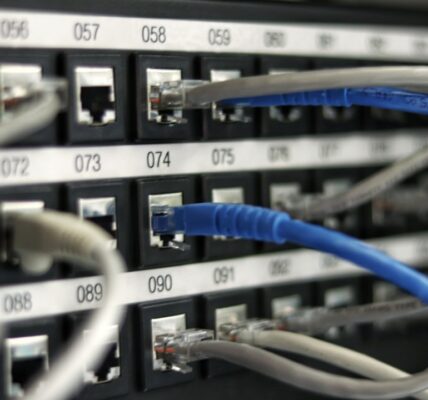Neural interfaces, often referred to as brain-computer interfaces (BCIs), represent a groundbreaking intersection of neuroscience and technology. These systems facilitate direct communication between the brain and external devices, enabling a two-way exchange of information. By translating neural signals into commands that can control computers, prosthetics, or other devices, neural interfaces hold the promise of revolutionizing how individuals interact with technology.
The implications of this technology extend far beyond mere convenience; they touch on profound aspects of human cognition, rehabilitation, and even the enhancement of human capabilities. The concept of neural interfaces is not merely a futuristic vision; it is a rapidly evolving field that has seen significant advancements in recent years. Researchers are exploring various methodologies to decode brain activity, ranging from invasive techniques that involve implanting electrodes directly into the brain to non-invasive approaches that utilize electroencephalography (EEG) or functional magnetic resonance imaging (fMRI).
As our understanding of the brain’s complex signaling mechanisms deepens, so too does our ability to harness these signals for practical applications. This article delves into the evolution of neural interface technology, its effects on brain function, potential benefits, ethical implications, associated risks, and its future trajectory.
The Evolution of Neural Interface Technology
The journey of neural interface technology began in the mid-20th century when scientists first started to explore the electrical activity of the brain. Early experiments involved simple electrodes placed on the scalp to measure brain waves, leading to the development of EEG. This non-invasive technique provided a window into the brain’s electrical activity but lacked the resolution needed to decode specific thoughts or intentions.
As technology advanced, researchers began to experiment with more invasive methods, such as implanting electrodes directly into the brain tissue. These developments marked a significant leap forward in our ability to interpret neural signals. One landmark achievement in this field was the work done by neuroscientists like Miguel Nicolelis and Andrew Schwartz, who demonstrated that monkeys could control robotic arms using their thoughts alone.
By decoding the electrical signals generated by neurons in the motor cortex, these researchers were able to translate intentions into actions. This breakthrough not only showcased the potential of neural interfaces but also paved the way for further innovations in prosthetic technology. Over the years, advancements in materials science and microelectronics have led to the creation of more sophisticated and biocompatible devices that can be implanted with minimal risk and discomfort.
The Effects of Neural Interfaces on Brain Function

The integration of neural interfaces with the human brain raises intriguing questions about their effects on brain function. While these devices are designed to assist or enhance cognitive abilities, they also have the potential to alter neural pathways and influence how we think and behave. For instance, studies have shown that when individuals use BCIs to control external devices, their brains adapt to this new mode of interaction.
This neuroplasticity—the brain’s ability to reorganize itself by forming new neural connections—can lead to changes in motor skills and cognitive processes. Moreover, the use of neural interfaces can provide insights into various neurological conditions. For example, researchers are investigating how BCIs can be used to restore movement in paralyzed patients by bypassing damaged pathways in the nervous system.
In such cases, the interface not only serves as a tool for communication but also as a means of rehabilitation, potentially leading to recovery of lost functions. However, this raises questions about whether prolonged use of these devices could lead to unintended consequences, such as dependency or alterations in natural cognitive processes.
The Potential Benefits of Neural Interfaces
| Benefits | Metrics |
|---|---|
| Improved Communication | Increased words per minute in communication |
| Enhanced Control | Decreased response time in controlling devices |
| Health Monitoring | Real-time monitoring of vital signs |
| Assistive Technology | Improved independence for individuals with disabilities |
The potential benefits of neural interfaces are vast and varied, spanning medical applications, enhancement of human capabilities, and even new forms of communication. In the medical realm, BCIs have shown promise in treating conditions such as epilepsy, depression, and chronic pain. For instance, deep brain stimulation (DBS) has been employed successfully in patients with Parkinson’s disease to alleviate symptoms by modulating abnormal neural activity.
Similarly, BCIs are being explored as a means to restore vision in individuals with retinal degeneration by directly stimulating the visual cortex. Beyond medical applications, neural interfaces could significantly enhance human capabilities. Imagine a world where individuals can control devices with their thoughts alone—navigating virtual environments or manipulating digital content without physical input.
This could revolutionize industries such as gaming, education, and even remote work. Furthermore, BCIs could facilitate new forms of communication for individuals with severe disabilities, allowing them to express thoughts and emotions through direct brain-to-device interaction. The implications for social interaction and personal expression are profound.
The Ethical Implications of Neural Interfaces
As with any transformative technology, the rise of neural interfaces brings forth a host of ethical considerations that must be addressed. One primary concern revolves around privacy and consent. The ability to access and interpret an individual’s thoughts raises significant questions about who owns that information and how it can be used.
If neural data can be decoded and analyzed, there is a risk that it could be exploited for commercial gain or even manipulated for nefarious purposes. Additionally, there are concerns about equity and access to this technology. As neural interfaces become more advanced and integrated into society, disparities may arise between those who can afford such enhancements and those who cannot.
This could lead to a new form of inequality where cognitive enhancements become a privilege rather than a right. Furthermore, there is the potential for societal pressure to adopt these technologies for fear of being left behind in an increasingly competitive world. The ethical landscape surrounding neural interfaces is complex and requires careful consideration from policymakers, ethicists, and technologists alike.
The Risks and Concerns Associated with Neural Interfaces

While the promise of neural interfaces is enticing, there are inherent risks and concerns that must be acknowledged. One significant risk is related to the safety and long-term effects of implantable devices. Invasive procedures carry inherent surgical risks, including infection and complications from anesthesia.
Moreover, there is uncertainty regarding how these devices will interact with biological tissues over time; issues such as device rejection or degradation could pose serious challenges. Another concern is related to cognitive autonomy. As individuals increasingly rely on neural interfaces for various tasks—be it communication or control over their environment—there is a risk that they may become overly dependent on these technologies.
This dependency could lead to diminished cognitive skills or reduced motivation to engage in traditional forms of learning and problem-solving. Additionally, there are fears about potential hacking or unauthorized access to neural data, which could have dire consequences for personal security and mental privacy.
The Future of Neural Interface Technology
Looking ahead, the future of neural interface technology appears both promising and uncertain. Ongoing research is focused on improving the efficacy and safety of these devices while expanding their applications across various fields. Innovations in materials science may lead to more biocompatible implants that can seamlessly integrate with neural tissue without causing adverse reactions.
Furthermore, advancements in machine learning algorithms are enhancing our ability to decode complex neural signals with greater accuracy. As we move forward, interdisciplinary collaboration will be crucial in shaping the future landscape of neural interfaces. Neuroscientists, engineers, ethicists, and policymakers must work together to address the multifaceted challenges posed by this technology.
Public engagement will also play a vital role in shaping societal attitudes toward neural interfaces; fostering an informed dialogue about their potential benefits and risks will be essential for responsible development.
The Role of Neural Interfaces in Shaping the Future of Brain Technology
Neural interfaces stand at the forefront of a technological revolution that has the potential to redefine our relationship with machines and enhance human capabilities in unprecedented ways. As we continue to explore this fascinating field, it is imperative that we remain vigilant about the ethical implications and risks associated with these technologies. By fostering an environment of collaboration and open dialogue among stakeholders from various disciplines, we can navigate the complexities surrounding neural interfaces while maximizing their benefits for society as a whole.
The journey toward fully realizing the potential of neural interfaces is just beginning. As research progresses and new breakthroughs emerge, we may find ourselves on the cusp of a new era in which our understanding of consciousness and cognition is fundamentally transformed. Whether through medical advancements that restore lost functions or enhancements that expand our cognitive horizons, neural interfaces are poised to play a pivotal role in shaping the future of brain technology and human experience itself.
FAQs
What are neural interfaces?
Neural interfaces are devices that connect directly to the brain or nervous system to record or stimulate neural activity. They can be used for medical purposes, such as restoring lost sensory or motor functions, or for non-medical purposes, such as controlling external devices with the mind.
How do neural interfaces work?
Neural interfaces work by either recording neural activity, stimulating neural activity, or both. Recording devices, such as electrodes, can detect the electrical signals produced by neurons. Stimulation devices, such as electrodes or optogenetic tools, can deliver electrical or optical signals to neurons to influence their activity.
What are the potential applications of neural interfaces?
Neural interfaces have the potential to revolutionize medical treatments for conditions such as paralysis, blindness, deafness, and neurological disorders. They also have the potential to enhance human capabilities, such as enabling direct brain control of prosthetic limbs or providing new ways to interact with computers and other devices.
What are the risks and ethical considerations associated with neural interfaces?
The use of neural interfaces raises concerns about privacy, security, and the potential for misuse of the technology. There are also ethical considerations related to consent, autonomy, and the potential for unintended consequences on the brain and behavior. Additionally, there are risks of infection, tissue damage, and other adverse effects associated with implanting devices in the brain.



